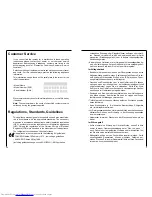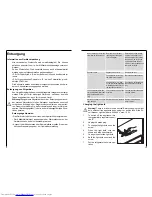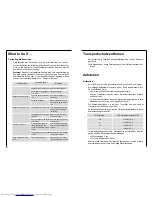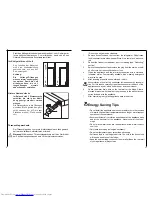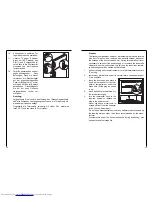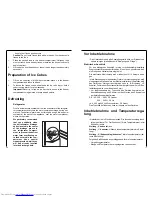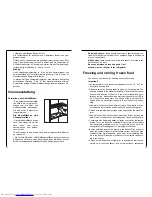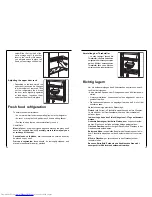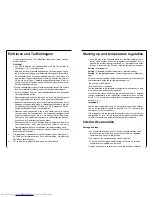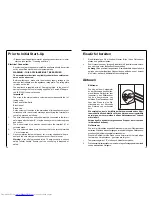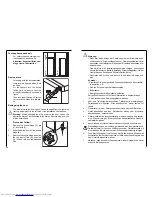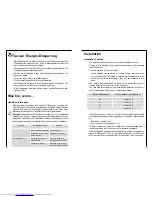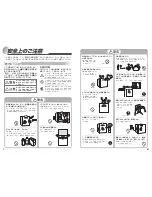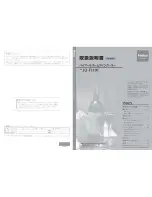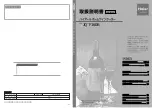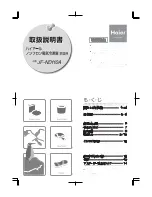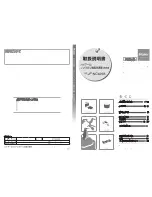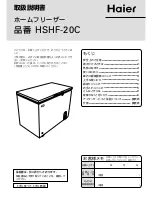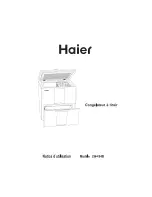
19
Der Kompressor läuft nach
einiger Zeit selbsttätig an.
Siehe Abschnitt „Reinigung
und Pflege“
Dies ist normal, es liegt kei-
ne Störung vor.
Nach Änderung der Tem-
peratureinstellung läuf der
Kompressor nicht sofort an.
Wasser am Kühlraumboden
oder auf Abstellflächen.
Tauwasser-Ablaufloch ist
verstopft.
Die Lebensmittel sind zu
warm.
Innenbeleuchtung funktio-
niert nicht
Das Gerät steht neben einer
Wärmequelle.
Temperatur ist nicht richtig
eingestellt.
Bitte im Abschnitt "Inbe-
triebnahme" nachsehen.
Lampe ist defekt.
Bitte im Abschnitt "Lampe
auswechseln" nachsehen.
Temperaturregler vorüber-
gehend auf kältere Einstel-
lung drehen.
Tür war längere Zeit geöff-
net.
Bitte im Abschnitt "Aufstell-
ort" nachsehen.
Innerhalb der letzten 24
Stunden wurden größere
Mengen warmer Lebens-
mittel eingelagert.
Tür nur so lange wie nötig
geöffnet lassen.
Starke Reifbildung im Gerät,
evtl. auch an der Türdich-
tung.
Türdichtung ist undicht
(evtl. nach Türanschlag-
wechsel).
An den undichten Stellen
Türdichtung vorsichtig mit
einem Foen® erwärmen
(nicht wärmer als ca. 50
°C). Gleichzeitig die
erwärmte Türdichtung von
Hand so in Form ziehen,
daß sie wieder einwandfrei
anliegt.
Ungewöhnliche Geräusche.
Gerät hat Kontakt mit der
Wand oder mit anderen
Gegenständen.
Gerät steht nicht gerade.
Ein Teil, z. B. ein Rohr, an
der Geräterückseite berührt
ein anderes Geräteteil oder
die Wand.
Gegebenenfalls dieses Teil
vorsichtig wegbiegen.
Gerät etwas wegrücken.
Verstellfüße nachjustieren.
Gerät kühlt zu stark.
Temperatur ist zu kalt ein-
gestellt.
Temperaturregler vorüber-
gehend auf wärmere Ein-
stellung drehen.
Remove transport safeguard
The appliance and the interior fittings are protected for transport.
• Remove all adhesive tape and packing pieces from the interior of the
appliance.
26
Disposal
Appliance Packaging Information
All materials are environmentally sound! They can be dumped or bur-
ned at an incinerating plant without danger!
About the materials: The plastics can be recycled and are identified
as follows:
>PE< for polyethylene, e.g. the outer covering and the bags in the
interior.
>PS< for polystyrene foam, e.g. the pads, which are all free of chlo-
rofluorocarbon.
The carton parts are made from recycled paper and should be dispo-
sed of at a waste-paper recycling collection location.
Disposal of old Appliances
For environmental reasons, refrigeration appliances must be dispo-
sed of properly. This applies to your old appliance, and - at the end of
its service life - for your new appliance as well.
Warning! Before disposing of old appliances make them inoperable.
Remove plug from mains, sever the power cable, remove or destroy
any snap or latch closures. This eliminates the danger that playing
children lock themselves into the appliance (danger of suffocation!) or
place themselves into other life-endangering situations.
Disposal:
• The appliance may not be disposed of with domestic waste or bulky
refuse.
• The refrigerant circuit, especially the heat exchanger at the back of
the appliance, may not be damaged.
• Information concerning collection schedules or locations can be
obtained from the local disposal authorities or town hall.

